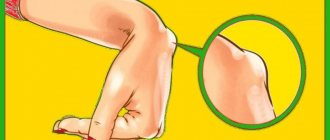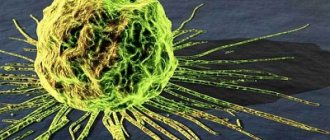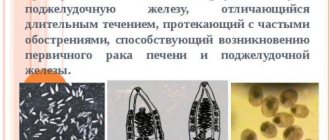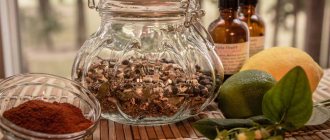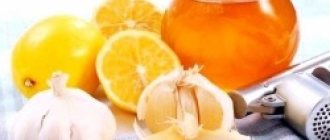Tubootitis is an inflammatory lesion of the middle ear and auditory tube, causing catarrhal otitis media. The disease is also called eustachitis, tubotympanitis and salpingootitis.
Author:
Oganesyan Tigran Sergeevich
otolaryngologist, rhinosurgeon, leading physician of the clinic
Added information about physiotherapy as treatment methods.
Tubootitis is an inflammatory lesion of the middle ear and auditory tube, causing catarrhal otitis media. The disease is also called: eustachitis, tubotympanitis, salpingootitis. Tubootitis is fraught with serious complications - the development of exudative, adhesive, purulent otitis media, conductive hearing loss or absolute hearing loss. It is important to start professional and individually selected treatment in the initial stages of the disease. Therefore, at the first signs of inflammation of the middle ear, contact an otolaryngologist.
Physiology of the process of occurrence of tubootitis
The middle ear is located in the temporal bone, between the external auditory canal and its internal section. It has two functional components - the tympanic cavity and the auditory (Eustachian) tube. The auditory tube connects the tympanic cavity with the nasopharynx, balances the pressure in the cavities of the middle ear, and participates in the functioning of the entire auditory system. It has a small diameter - approximately 2 mm. When the body becomes infected, the mucous membrane of the middle ear becomes inflamed, and the lumen of the auditory tube decreases. As a result, ventilation processes are disrupted - air passes into the tympanic cavity with difficulty or does not enter at all. Due to a long-term lack of air exchange and disruption of the natural drainage function of the auditory tube (the natural secretion secreted by the glands of the mucous membrane of the middle ear is normally evacuated into the nasopharynx through the auditory tube), stagnation of fluid occurs in the middle ear, which disrupts the normal functioning of the auditory system and is dangerous with the risk of developing infectious process in the tympanic cavity.
Prevention
Prevention of pathology consists in the timely detection and elimination of respiratory diseases.
- Patients are advised to avoid sudden changes in pressure, hypothermia, drafts and completely avoid diving and mountaineering.
- The process of blowing your nose deserves special attention. You should blow your nose carefully, closing one nostril and opening your mouth slightly.
- For allergic and respiratory diseases, it is necessary to use vasoconstrictors and antihistamines.
- Systematic hardening will help avoid frequent colds and reduce the risk of developing tubo-otitis.
- Experts recommend limiting long airplane flights.
It is important to remember that with a disease such as eustachitis, treatment at home is only possible if it is uncomplicated. Or during an exacerbation of the chronic form of the disease, when both the causes that caused the disease and effective methods of treating it have been precisely established. But even in this case, prior approval of the treatment regimen with a doctor is necessary.
In no case should tubo-otitis be treated with folk remedies for:
- rupture of the eardrum;
- acute form of the disease;
- allergic eustachitis;
- purulent discharge from the middle ear.
Upon transition to the chronic form, the primary symptoms almost completely disappear. But tubo-otitis provokes constant tension on the eardrum, due to which it gradually thickens and loses its elasticity. As a result, hearing loss develops, the extreme manifestation of which can be complete deafness.
Tubootitis often occurs in children. Treatment is supposed to be medicinal, this is the main method of therapy, but traditional medicine can only be an additional method of disposal. However, as many people know, the best way to protect against the disease is its prevention.
- It is necessary to avoid injuries to the ear, nose, and head.
- It is necessary to blow your nose correctly (you need to pinch one half of your nose and open your mouth).
- It is important to consult a doctor promptly at the first symptoms of the disease.
- Parents should pay increased attention to the health of the child, because children get the flu and other infectious diseases more often than adults.
- It is necessary to regularly rinse the mouth and nose so that infection does not linger in these organs.
- Hypothermia of the body should not be allowed.
- Proper nutrition, leading a healthy lifestyle, and playing sports are the key principles of good health and the absence of any diseases, including eustachitis.
Tubootitis, the symptoms and treatment of which were described in this article, will be cured without problems and will not leave behind any complications if the patient consults a doctor on time and follows all his instructions.
Now you know what eustachitis is, what its symptoms are and the causes of its occurrence. We found out that there are several ways to treat this disease, including using traditional medicine. However, to avoid complications, you should not self-medicate, and at the slightest suspicion, it is important to urgently make an appointment with an otolaryngologist, who will prescribe adequate therapy.
Causes of tubootitis
Mostly tubo-otitis occurs due to an infection that enters the auditory tube from the nasal cavity and nasopharynx. This most often occurs due to infectious diseases of the nose and nasopharynx - acute and chronic rhinitis, sinusitis, adenoiditis, tonsillitis, acute respiratory viral infections.
Pathology can also be provoked by:
- allergens that cause swelling of the mucous membranes;
- structural abnormalities in the nasopharynx (adenoids, antrochoanal polyps) that block air access to the auditory tubes;
- deviated nasal septum;
- stopping nosebleeds with prolonged packing;
- sudden changes in atmospheric pressure.
Hardware treatment
After the acute symptoms of eustachitis are relieved, the doctor prescribes special procedures due to which the tissues are regenerated and the function of the auditory tube is restored. Such events include:
- pneumomassage of the eardrum;
- electrical stimulation;
- ultraviolet radiation, ultra-high frequency therapy (UHF).
Tubootitis, the treatment of which involves all of the above procedures, must be eliminated within 7 days. When prescribing such activities, it is necessary to take into account the age of the patient, since such sessions are contraindicated for people over 60 years of age. In addition, people with heart pathologies are also advised to avoid physical therapy.
General symptoms of tubo-otitis in adults
There is an acute (up to a month) and chronic (3-6 months or more) form of tubootitis. In any form, the person’s condition is generally stable; this disease is not characterized by severe pain and high fever. Therefore, the forms of tubootitis differ fundamentally only in the duration of their development. A rise in temperature indicates the onset of a purulent process and the development of complications of the disease. It is recommended to begin treatment of inflammation in the acute form, since the chronic form is more difficult to treat.
Symptoms of tubootitis:
- stuffy ears;
- hearing loss that may improve with swallowing or yawning;
- heaviness in the head;
- dizziness;
- problems with coordination of movements;
- noise and buzzing in the ears;
- autophony - the echo of one’s own voice in the head;
- crackling in the ears;
- pain, discomfort in the neck;
- pain, discomfort in the ears;
- feeling of fluid flowing in the ears when tilting the head.
These unpleasant manifestations can occur in one ear or in both ears at once.
There is a specific form of tubootitis - aerootitis, which develops due to sudden changes in atmospheric pressure (for example, during frequent airplane flights). It is with this form of the disease that pain in the ear is characteristic, as well as a feeling of pressure and fullness.
How to treat tubootitis with folk remedies
Symptoms of tubo-otitis: unilateral or bilateral hearing loss, tinnitus, feeling of fullness. When yawning or blowing your nose, hearing improves for a short time.
The diagnosis and treatment of tubootitis is carried out by an otolaryngologist. Typically, local antibiotics, antiseptics (disinfectants), and physiotherapy are used for treatment. Injecting drugs into the ear through the Eustachian tube has a good effect. This procedure is performed by an ENT doctor.
Treatment of tubootitis is aimed at eliminating the cause of the disease (tonsils, adenoids) and relieving symptoms. If the disease is not advanced, folk remedies will help cope with it.
For tubo-otitis, you can use this remedy. You need to prepare fresh aloe juice, mix it 1:1 with warm water. Six drops of this product are dripped into each nasal passage. Tampons soaked in this natural medicine are placed in the ears.
Onion treatment
- You can also fight this disease with onion juice. First, the ear canal is thoroughly cleaned of secretions. Then warm juice is instilled into each ear: 4 drops.
- This procedure gives a good effect in treatment. You need to moisten the turunda in the juice of the onion and insert it into the ear.
- This folk method will be very helpful for tubo-otitis. A piece of onion is heated and placed warm in the ear. The nose is also instilled with juice. Treatment procedures are recommended to be carried out before bedtime for two weeks.
- The following method of treating inflammation of the Eustachian tube is widely known among people. It is necessary to remove the middle and husk from a medium-sized onion. Pour a teaspoon (teaspoon) of cumin into the resulting onion “glass”. Place the onion in a hot oven and simmer until soft. Then take it out, let it cool a little and squeeze it out. The juice is instilled into the ears: 1 drop.
Medicinal herbs
It is very useful to make steam baths for a sore ear from medicinal herbs: yarrow, chamomile, nettle or string.
At home, you will need a sterile bucket, pour water into it (2/3 of the volume), place it on the stove and bring to a boil. Then throw in a handful of herbs, remove from the heat and let the broth brew a little. After 2 minutes, they begin the procedure: they sit over a bucket, tilt their head with the sore ear over the steam, and cover themselves with a thick scarf. The steam bath is carried out once a day for at least one week. After the procedure, the ear should be instilled with onion juice and a dry warming compress should be applied.
Ear drops and tinctures for turundas
Garlic plays an important role in the treatment of tubootitis. To relieve inflammation in the Eustachian tube, garlic oil is instilled into the ears.
Traditional medicine strongly recommends instilling mint tincture into the ears for tubo-otitis. It is prepared in this way: 100 ml of vodka + 1 tbsp. a spoonful of fresh crushed plant leaves. The extract is infused for a week in the dark, and then the filtered liquid is poured into a bottle. Place one drop in the ears three times a day.
For congestion and noise in the ears, you can use this tincture. Prepare one large spoon of lemon balm (it needs to be ground into powder) and three spoons of vodka. Mix these ingredients and let it brew. The finished tincture is used as drops in the ears: 5 drops each.
Nightshade tincture will help relieve inflammation in the Eustachian tube. It is prepared in the same way as in the previous recipe. The turunda from the bandage is moistened with the prepared extract and inserted into the sore ear.
Medicine from ancient times recommends a tincture of fresh sweet clover herb for use in tubootitis. It is an effective anti-inflammatory, antiseptic and healing agent. It is prepared and used in the same way as the previous recipe.
Healers recommend inserting turunda soaked in this composition into sore ears. To do this, you need to take 2 tablespoons of powder of crushed dried flowers and leaves of sweet clover. Add 50 g of Vaseline oil to them. Everything is mixed. The ointment quickly relieves inflammation and pain.
Chicken egg treatment
An ancient remedy used for ear infections. You need to boil a fresh soft-boiled egg. Warm yolk is dripped into the more painful ear. It should be taken no more than 4 drops for each ear canal. After this, apply a dry cotton compress to the sore ear and go to bed. In the morning, you need to insert a turunda soaked in the following mixture into the ear canal: onion juice, golden mustache juice and butter. These components are taken in equal parts. After 4 hours, the flagellum must be removed from the ear. At night, you can drip mummy tincture into the ear canal. One tablet is dissolved in a tablespoon of vodka.
Source
How does tubo-otitis manifest in children?
Children are at greater risk of developing tubo-otitis because their ear canals are shorter than those of adults, and infections penetrate into the middle ear more easily.
Symptoms of tubo-otitis in newborns:
- crying and jerking away when touching the area of the sore ear;
- general moodiness, sleep disturbances;
- poor appetite to the point of refusal to feed;
- fever, chills.
Older children who can identify their condition can be asked about their feelings. In this case, tubo-otitis is indicated by the same symptoms as in adults.
Traditional medicine recipes against tubootitis
The collection of folk remedies includes mostly plants that have anti-inflammatory and anti-edematous effects. Widely used: celandine, mint, chamomile, onion and aloe, lingonberries, viburnum and blueberries, lavender, coriander and eucalyptus, dandelion, birch leaves, etc. Such products are available and always at hand. The method of combating eustachitis is washing the nose, throat and ears, as well as ear swabs with a healing substance (herbal infusions or juices squeezed from the pulp of plants).
Onion
Take a medium sized onion. Cut one half into small slices. Place in an enamel bowl and place it in a larger container with boiling water. Keep it until the onion is well heated (but under no circumstances should you cook it). At the same time, finely chop the second half of the onion and squeeze out the juice.
Place the heated onion in the sore ear, and at the same time drop 2-4 drops into each nostril into the nose. Attention! To soften the pungency of fresh onion juice, dilute it with water 1:1. For chronic forms of tubootitis, try to minimize dilution with water, drink fresh juice as much as you can tolerate. It is advisable to perform the procedure every evening before bed for 1 month. Keep the heated onion in the ear canal for 25-30 minutes.
Aloe juice
The recipe is simple and effective:
- take a couple of medium-sized succulent aloe leaves;
- extract the juice from the pulp and dilute it with boiled water in equal parts (the water should be warm, but in no case hot);
- mix thoroughly;
- remove the pulp;
- put 3-5 drops into your nose regularly, every 3-4 hours;
- At the same time, place a swab moistened with aloe juice into your ear.
Attention! Use one portion for 1-2 procedures, then prepare a new portion. The course is 2-3 weeks, monitor your condition.
Herbal collection with chamomile, angelica, nettle
To prepare this product you need to take in equal proportions:
- chamomile (flowers);
- angelica root;
- nettle leaves (or the whole plant);
- lingonberry leaf;
- mint;
- hop cones.
All plants must be initially dried.
Mix thoroughly and grind as much as possible. Pour boiling water over 2 tbsp. l. vegetable mixture in a thermos with an airtight lid.
It is recommended to prepare the infusion in the late hours so that it is thoroughly infused by the morning. Drink 1/3 glass three times a day. Time of use: half an hour before meals. And also make a cotton swab from the broth once a day.
Once a day, soak a cotton swab in the broth and place it in the sore ear.
Attention! Roll the tampon small so that it fits as deep as possible to the eardrum, but can be easily removed by the thread. Or use a cotton swab, being careful.
The duration of the course is until recovery. The recipe is especially indicated for chronic patients, and the decoction should be consumed for another 1.5-2 weeks after the obvious symptoms disappear. This is necessary in order to consolidate the result and prevent the disease from returning in an even more “insidious” hidden form.
Herbal collection with viburnum, mint, St. John's wort
For 0.75 liters of boiling water you will need 30 grams of a mixture prepared from the following items:
- bark of the trunk and branches of viburnum;
- mint leaves;
- St. John's wort (whole plant);
- lingonberry leaves;
- birch leaves;
- whole coriander fruits.
Attention! All plants are used in dried form - this way, when brewed, the maximum of useful substances are released.
Fill the herbal mixture with boiling water in a ceramic bowl, cover the container tightly and leave to steep for 8 hours. Take the decoction 1 glass orally between meals on an empty stomach. Drink the entire amount in a day. The course is 2 weeks, then a break for 1 week, repeat. And so on until it improves.
Herbal collection with lavender, eucalyptus, dandelion
The recipe contains the following ingredients:
- whole lavender;
- eucalyptus leaves;
Grind the dried plants thoroughly and mix in equal quantities. Separate 2 tbsp. spoons for 1 procedure.
Fill this volume with boiling water (500 ml). Leave all night in a dark place at room temperature, closer to cool, so that the souring process does not begin. In the morning, pour a small amount of the solution into a 25-30 ml glass to wet the tampons, drink the rest in equal parts throughout the day. Take 35-40 minutes after meals. Place tampons in the ear once a day and keep in the ear for 20-30 minutes.
Herbal collection with blueberries, calendula, sweet clover
You will need dried plants:
Mix all ingredients in equal quantities and grind until smooth. Take 2 tbsp. l. the resulting mixture and 0.5 liters of boiling water. Fill the herbal mixture with water in a thermos and keep it tightly closed overnight.
Drink the infusion three times a day, 1/3 cup. At the same time, treat the ear: once a day, place a cotton swab soaked in the solution in the ear for 1 hour. Attention! Be careful not to damage the membrane. When in doubt, use a small cotton swab.
Garlic with glycerin and vegetable oil
Drops in the ear prepared as follows show a good effect:
- chop a whole medium-sized head of garlic into a pulp;
- mix with vegetable oil (100-120 g);
- strain out the fibers;
- leave in a dark place for about 10-12 days;
- add a few drops of glycerin.
Attention! Glycerin should be taken pure, without perfume additives. Look for it in pharmacies and drug stores.
Course 1-2 weeks. Warm to your body temperature before use.
How is tubootitis diagnosed?
An otolaryngologist makes a diagnosis of acute or chronic inflammation of the auditory tube based on:
- Subjective patient complaints and medical history.
- Visual inspection.
- Data obtained during otoscopy, microotoscopy, video otoscopy, endoscopic examination of the nasopharynx.
- Data obtained from tympanometry, audiometry, and the study of hearing with tuning forks.
- Laboratory testing of a swab from the ear, nose or throat.
- Allergy tests (if allergic tubo-otitis is suspected).
- Computed tomography of the temporal bones, paranasal sinuses and nasopharynx.
Diagnostics
To diagnose the disease, the otolaryngologist first examines the patient’s nasal cavity and ears. These are rhinoscopy and otoscopy procedures. They help to examine the mucous membrane of the nasopharynx, the mouth of the Eustachian tube, and the ends of the nasal turbinates. As a result, the cause of the narrowing of the lumen can be identified. Rhinoscopy is performed using a special nasopharyngeal speculum.
- Preparing for Confession
- How to choose an evening dress according to your body type
- Grooves on the tongue
Otoscopy is a procedure that examines the condition of the ear canal and eardrum. With the development of eustachitis, swelling and hyperemia of the mucous membrane is observed. If the disease has progressed to the perforated stage, then discharge from the eardrum and perforation become visible. Other methods for diagnosing pathology:
- Politzer ear blowing - a procedure in which the tip of a balloon is inserted into one nostril, and the second is clamped, after which air is released to check the patency of the auditory tube;
- general blood analysis;
- Analysis of urine;
- ear swab for;
- audio tests - hearing tests;
- radiography;
- CT scan.
Treatment of tubootitis
Treatment of tubo-otitis can be carried out at home - in the initial stages, or in a hospital - with progression or threat of complications. With timely diagnosis and proper treatment, acute tubo-otitis resolves within 1-2 weeks. The chronic type of disease takes longer to treat.
Therapy involves a combined approach and poses the following tasks:
- elimination of foci of infection in the nose, paranasal sinuses and nasopharynx;
- elimination of inflammation, swelling and restoration of the normal diameter of the auditory tube, its drainage and ventilation functions;
- elimination of inflammatory secretions and mucous secretions;
- improving blood circulation in the mucous membrane of the sore ear;
- eliminating the risk of complications.
Drug treatment of tubootitis is carried out using:
- antibiotics;
- antihistamines;
- antibacterial drugs;
- vasoconstrictor drops;
- proteolytic enzymes.
Local treatment includes:
- rinsing the nose, nasopharynx and paranasal sinuses with antiseptic solutions using vacuum aspiration;
- application of medications to the mucous membrane of the pharyngeal orifices of the auditory tubes;
- catheterization of the auditory tubes with the introduction of antibacterial and anti-inflammatory drugs;
- blowing of the auditory tubes according to Politzer, pneumomassage of the eardrums (impact on the eardrum and auditory tube by creating alternately positive and negative pressure in the external auditory canal);
- pressure inhalation therapy (inhalation with the Paris-sinus device).
Physiotherapy treatments have a good effect:
- UHF (ultra high frequency therapy) of the nose area;
- ultraviolet irradiation;
- laser therapy;
- electrophoresis;
- phonophoresis.
Surgical intervention is possible in the following cases:
- If the nasal disease is caused by mechanical obstruction, a neoplasm in the nasopharynx or hypertrophied adenoid tissue, surgery is performed to remove them (adenoidectomy, removal of an antrochoanal polyp, removal of a nasopharyngeal tumor).
- If the disease develops against the background of a chronic sinus infection, surgical sanitation of the paranasal sinuses is performed.
- If the anatomy of the nasal septum is disturbed, the nasal turbinates are hypertrophied, which makes air exchange difficult, septoplasty and correction of the inferior turbinates are prescribed.
- If exudate remains in the tympanic cavity for a long time and drug therapy is not effective, then myringotomy and tympanostomy are performed.
Treatment of eustachitis
Most people who are faced with this disease do not know how to treat eustachitis. Therapeutic measures for eustachitis are aimed at relieving swelling, sanitizing the nasopharynx, and stopping an allergic reaction or inflammation. For eustachitis, to reduce swelling of the auditory tube, antihistamines for oral administration (suprastin, claritin, desloratadine) and vasoconstrictor nasal drops (nazol, nazivin, tizin, vibrocil, sanorin) are prescribed.
To improve the patency of the auditory tube, it is necessary to catheterize it, followed by the administration of a solution of adrenaline or hydrocartisone. For eustachitis, pneumomassage of the eardrum has a good effect. In case of formation of transudate of the tympanic cavity, the introduction of proteolytic enzymes is used to liquefy it. The manipulation itself is carried out through the auditory tube by catheterization.
In the acute period of eustachitis, it is not recommended to carry out Politzer blowing. The fact is that infected mucus can enter the middle ear cavity from the pharynx through the auditory tube.
Complex treatment of eustachitis includes various physiotherapeutic techniques - microwave therapy, UHF, laser therapy, electrical muscle stimulation, ultraviolet radiation.
In the process of treating eustachitis, it is imperative to eliminate the causes of its occurrence. If necessary, removal of adenoids, systemic antibiotic therapy, removal of a benign tumor of the pharynx and nose, etc. are carried out.
Symptoms and first signs
Depending on the causative factor, eustachitis can be acute or chronic. Symptoms will also vary.
Acute inflammation of the Eustachian tube often develops a few days after influenza, acute respiratory illness, or against the background of exacerbation of allergic rhinitis and sore throat. In all these conditions, reactive changes occur in the mucous membrane of the pharynx and involve the lymphoid tissue of the upper respiratory tract (tonsils). When the process reaches the pharyngeal opening of the Eustachian tube, it usually spreads to its lumen, causing swelling and blockage of the tube.
Chronic eustachitis usually occurs in the presence of chronic foci of inflammation in the upper respiratory tract, as well as due to non-inflammatory causes (covering the pharyngeal opening of the pipe, barotrauma).
The main complaints with eustachitis are:
- A feeling of stuffiness in the ear - occurs due to the retraction of the eardrum (after air from the nasopharynx stops entering the middle ear, a vacuum is created there).
- Hearing loss – a retracted eardrum does not conduct sound well to the inner ear. It is characteristic that hearing acuity with eustachitis is variable. The more liquid, the worse the sound conductivity. When you change the position of your head, the fluid in the tympanic cavity moves, and your hearing improves. Also, hearing can be temporarily restored after sneezing or blowing your nose, which causes the auditory tube to blow through.
- Autophony is the audibility of one’s own voice in the affected ear (“voice radiates into the ear”). This phenomenon is due to the fact that the fluid accumulated in the tympanic cavity is a good resonator for one’s own voice. In addition, with a gaping eustachian tube, vibrations of the vocal cords can penetrate it and reach the membrane, which traps them from the inside. Autophony decreases if you breathe through your mouth (this covers the pharyngeal opening of the Eustachian tube), take a horizontal position or lower your head between your knees (blood flow causes thickening of the mucous membrane, a decrease in the lumen of the tube and sticking of its walls).
- Tinnitus develops due to self-listening of processes occurring in the middle ear.
- A feeling of heaviness in the head is caused by oxygen starvation of the brain, which occurs when nasal breathing is disrupted. There are several explanations for this. Gas exchange occurs in the nasal cavity, and part of the inhaled oxygen is absorbed into the blood vessels of the nasal cavity. In addition, the stream of inhaled air is so powerful that it causes fluctuations in cerebral pressure (reflex constriction and dilation of blood vessels), promoting the movement of cerebral fluid. When you have a runny nose, the entire surface of the nasal cavity ceases to participate in gas exchange, and the body (especially the brain) receives less oxygen, and the lack of nasal breathing slows down the movement of brain fluid. This is what explains lethargy during a runny nose.
- The sensation of iridescent fluid in the ear when turning the head occurs in cases where fluid has accumulated in the tympanic cavity.
Causes of the disease
The main reason why eustachitis develops is infectious diseases of the upper respiratory tract. In diseases accompanied by catarrhal symptoms - runny nose, the appearance of purulent discharge, swelling of the nasopharyngeal mucosa - pathogenic microorganisms enter through the nasopharynx onto the mucous membrane of the auditory tubes and infect them.
This may happen:
- with pharyngitis;
- flu;
- ARVI;
- whooping cough;
- measles, etc.
Accordingly, the types of pathogenic organisms can be very different - streptococci, staphylococci, E. coli, herpes virus and others.
With the introduction of pathogenic flora, acute tubo-otitis begins.
The chronic form of the disease develops if the treatment of acute otitis is inadequate, or therapeutic measures, if the painful symptoms are eliminated, are not completed.
The chronic form of eustachitis is diagnosed:
- for chronic sinusitis;
- when tumors and neoplasms occur in the nasopharynx - adenoids, cysts, polyps, etc.;
- if there is a congenital or acquired curvature of the septum in the nose.
To aggravate chronic tubo-otitis, sometimes it is enough to blow your nose unsuccessfully.
There are also specific forms of the disease, the occurrence of which is provoked by a pressure drop caused by external factors:
- mareotitis - the disease is more common among divers and appears when there is a change in water pressure;
- aerootitis - pressure drops occur during air flights.
Pressure changes compress the auditory tube, making it difficult or stopping the penetration of air into the tympanic cavity.
